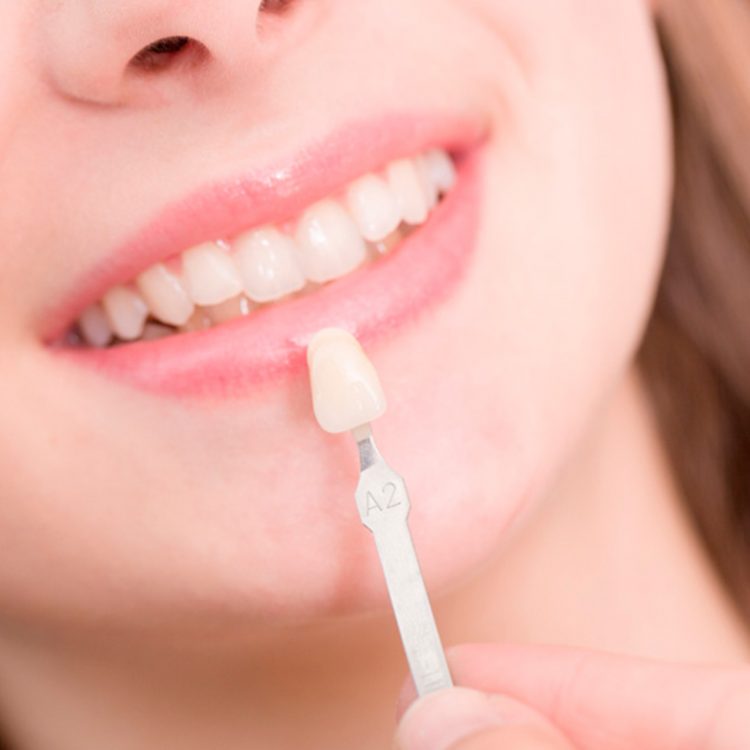A veneer is a thin shield of porcelain that is used to cover the front surface of a tooth. Veneers are designed as a permanent way to change or enhance the look of stained, chipped, broken, or undesired teeth.
To get a veneer, you’ll very likely need to see your dentist at least two times. Here is what you can expect during a typical veneer preparation and installation procedure.

The First of Many Impressions
Similar to most restorative dental procedures, impressions of your teeth are taken before, during, and in some cases after the final placement of the veneers.
Choosing a Shade
Choosing the shade of the veneers is an exciting step for most people. The final shade is determined by your request for a certain result, along with the dentist’s recommendations.
Your dentist will recommend a shade that she feels will best appear as natural as possible, while still giving you the look of attractive, flawless teeth. The shade can be customized to your skin tone and to your overall desire for whiter teeth.
Veneers require very little removal of the enamel surface of the tooth.
The prep work required will generally depend on the type of veneer used, position of the teeth, or your dentist’s preferred method of preparing the tooth.
You may or may not require local anesthetic for the appointment. You will be asked to bite down into the material for one to two minutes until the material is set, depending on the brand used.
If the dentist is satisfied with all of the impressions, they then are delivered to the dental laboratory.
Temporary Veneers
The dentist or dental assistant will construct a set of temporary veneers made from an acrylic material that will be cemented onto your teeth with a temporary cement.
Your New Smile
The veneers will return after seven to 10 business days. They will be placed on your teeth without any cement so the dentist can inspect them for any obvious flaws. Your final approval will give the go-ahead for the dentist to permanently cement the veneer to the tooth’s surface with a dental resin.
The dentist will check how your teeth bite together to ensure you’re not biting incorrectly onto the veneers. Small reductions of the opposing teeth may be necessary if the bite is not correct.
Caring for Your Veneers
Although veneers are designed to allow you to function normally, you may want to consider trying not to bite into hard food with your front teeth, or to use your teeth to open difficult items, because the veneers may chip or break.
Veneers are designed to last between 10 to 15 years. Regular cleanings from your dental hygienist are still recommended, along with regular dental checkups.




